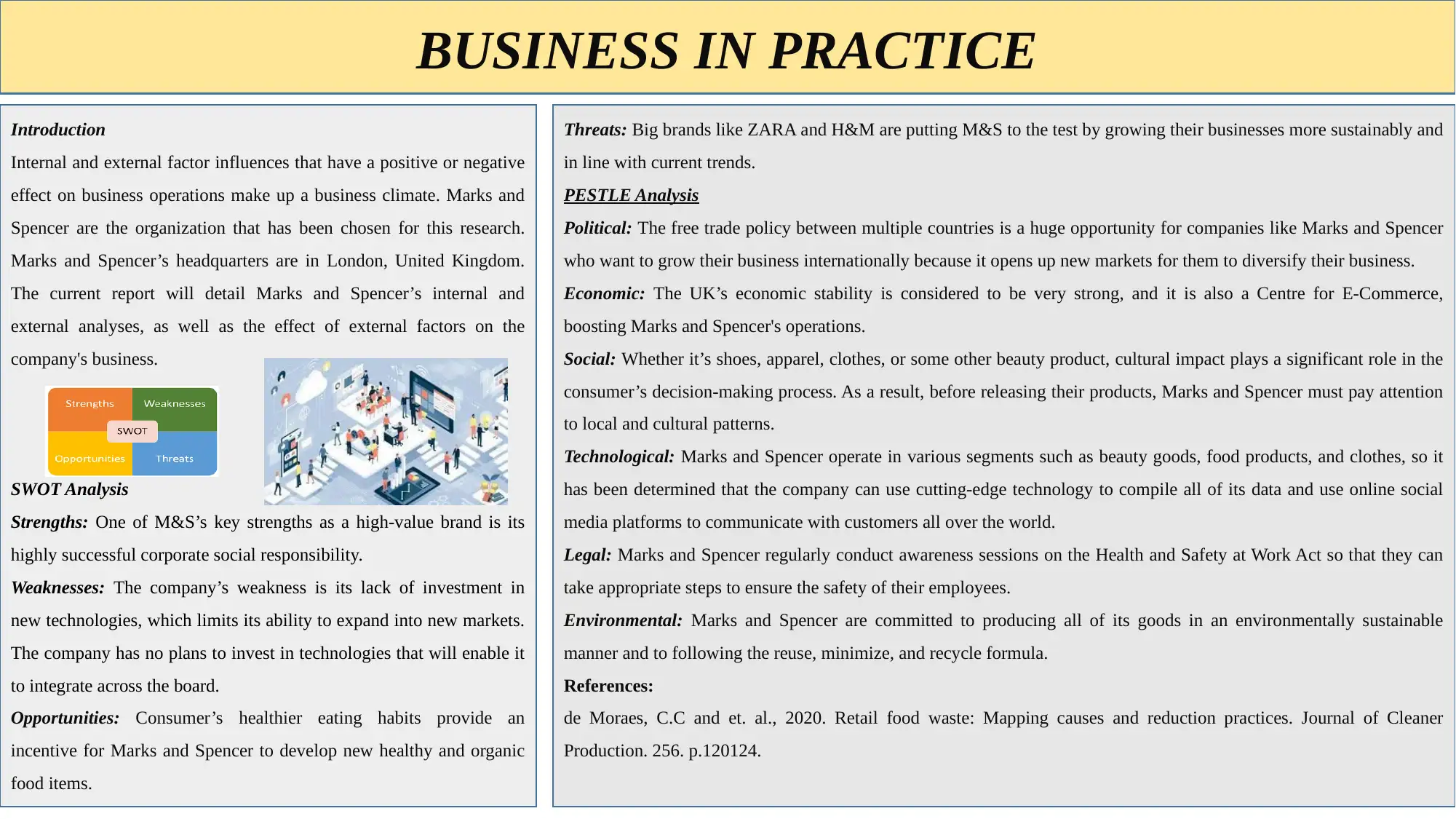Marks and Spencer: Business and SWOT Analysis Report
VerifiedAdded on 2022/11/29
|1
|477
|74
Report
AI Summary
This report provides a comprehensive analysis of Marks and Spencer (M&S), examining its internal and external environments. The report begins with an introduction to M&S and highlights the threats the company faces from competitors like Zara and H&M. It then delves into a PESTLE analysis, evaluating the political, economic, social, technological, legal, and environmental factors influencing M&S's business operations. The report further explores M&S's strengths, weaknesses, opportunities, and threats through a SWOT analysis. The analysis includes factors such as its strong brand reputation and corporate social responsibility initiatives, as well as its weaknesses in technological investment. The report also examines external factors, such as consumer behavior and the impact of free trade policies. Finally, the report concludes with a discussion of M&S's commitment to sustainability and the importance of adapting to changing market conditions.







![[object Object]](/_next/static/media/star-bottom.7253800d.svg)